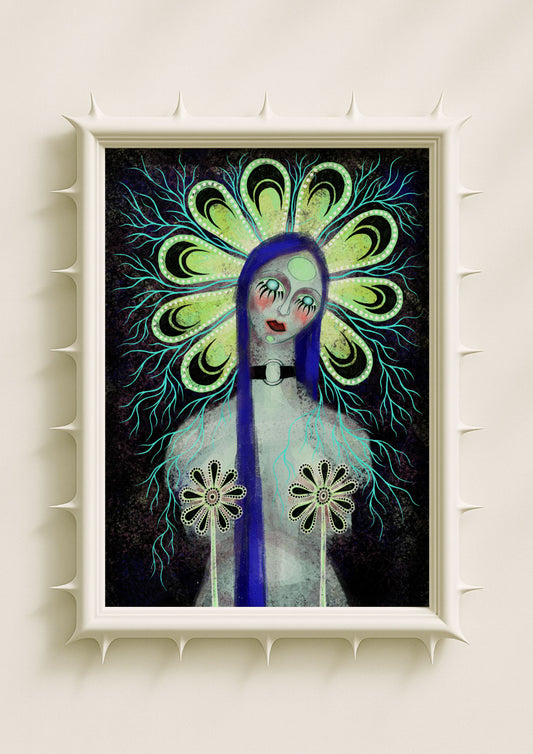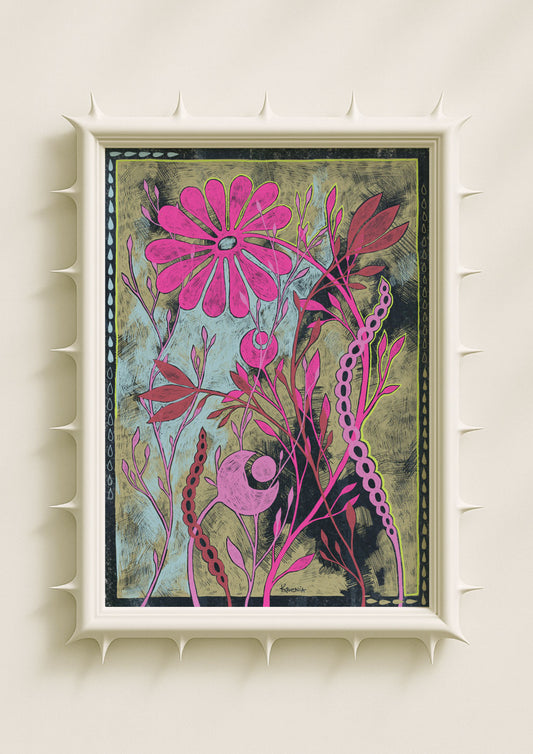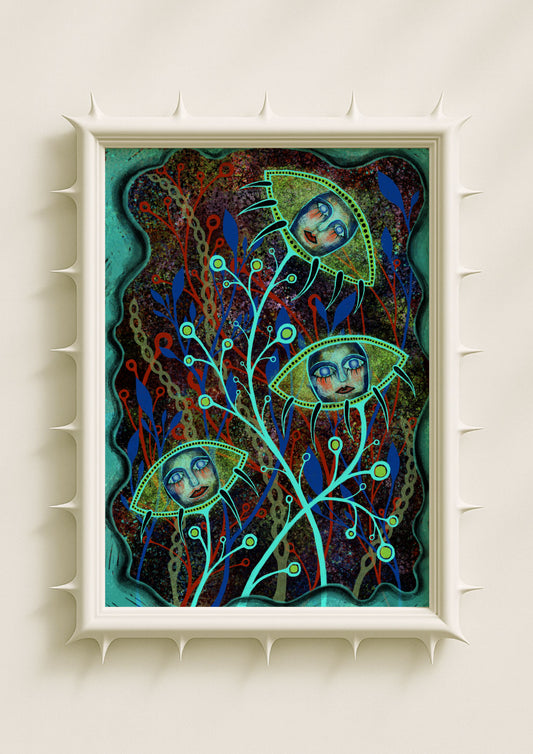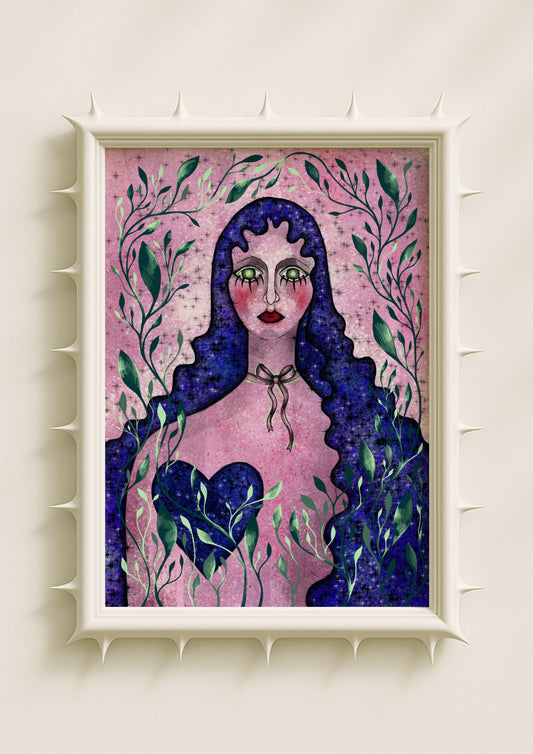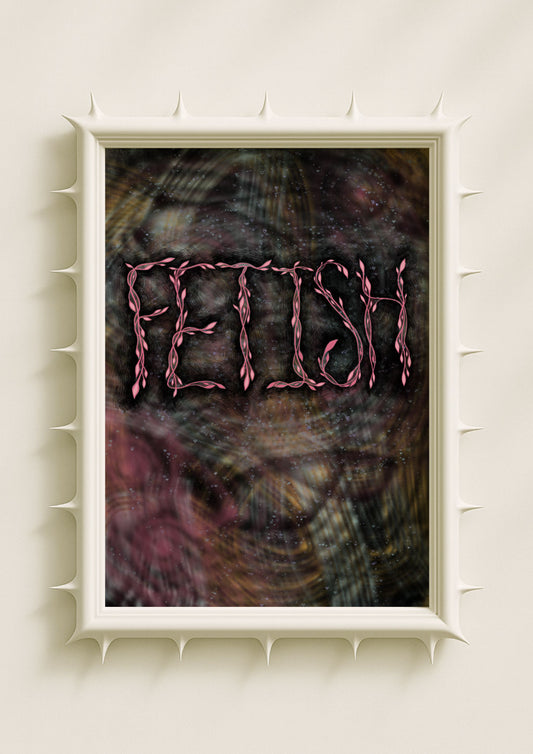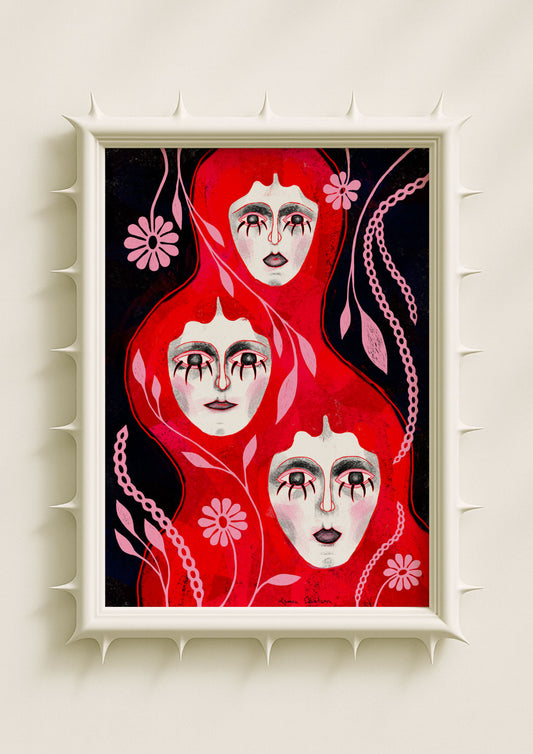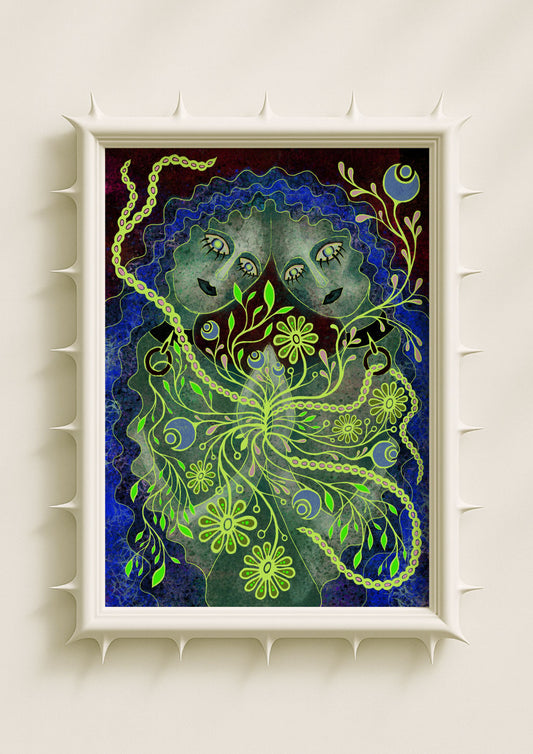Color is often the first thing we feel in an artwork, long before we understand the subject or the symbolism. It reaches us instinctively, almost physically, the way a scent or a familiar melody does. In art, color is not just visual information; it is emotional architecture. It shapes what the viewer senses before they have time to think. And for artists, pigment becomes a direct language — soft, loud, tender, or confrontational depending on how it’s used.

When I work with color, I feel it as atmosphere rather than category. A shade is not just red or blue or green; it is urgency, calm, nostalgia, rebellion, melancholy, or desire. Sometimes a palette can hold all these layers at once. The psychology of color is not a strict system. It’s a conversation between instinct and memory, both for the artist and the viewer.
How Color Speaks Before Form
Before the eye understands shape, it reacts to hue. Even a simple field of color can change our emotional temperature. Warm tones create movement; cool tones slow the air around them. A muted palette softens a space; a high-contrast palette sharpens it.
Artists have always relied on this immediacy. In symbolic traditions, each color carried a clear meaning. In modern and contemporary art, the relationship has become more personal — color reflects internal states rather than universal codes. A pale pink may feel fragile or hopeful. A deep cobalt might evoke introspection or a sense of distance. A saturated red can be joy, anger, vitality, or longing depending on how it holds space.
Color becomes a mirror. The viewer interprets it through their own emotional history.
Pigment as Memory
Color has the ability to trigger memory with surprising accuracy. A single tone can recall a certain room, season, or childhood object. This is one reason why color feels intimate: it connects the artwork to real lived experiences, even the ones buried quietly under the surface.

I often mix shades intuitively, letting them lean slightly warmer or cooler until they evoke the right mood. A slightly dusty green can carry the softness of an old book. A smoky violet can feel like an evening sky just before rain. These small shifts create emotional depth that goes beyond technique.
The Emotional Temperature of a Palette
Every artwork has a temperature — not literally, but psychologically. A palette dictates the emotional pace of a piece. It can make the viewer breathe differently, slow down, or lean in more carefully.
Warm palettes tend to expand, giving movement and openness. Cool palettes pull inward, creating introspection or stillness. Neutrals can feel honest and grounded, especially when paired with a single accent tone that becomes the emotional anchor of the composition.
In my portraits, I often use muted backgrounds with bursts of unexpected color. A soft grey can make a coral pink feel almost electric. A deep shadow can allow a pale flower to glow. These contrasts shape the emotional drama without overwhelming it.
Color as Symbolism, Without the Rules
Symbolism in color still matters, but it is no longer rigid. Instead of fixed definitions, color becomes a suggestion. A viewer may experience blue as serenity while another sees it as melancholy. This elasticity is part of what makes color psychologically rich.

In my surreal or botanical pieces, color often plays the role of emotion rather than representation. Leaves might be violet, petals might dissolve into shades of rust, skin might shift between cool and warm tones. The goal is not realism but resonance — an emotional truth expressed through pigment rather than logic.
How Color Shapes Interiors Through Art
When art enters a home, color becomes part of the room’s emotional climate. A vivid print can energise a quiet space; a monochrome piece can bring serenity to a busy one. People often choose art by instinct rather than theory, sensing the mood a palette carries.
A warm-toned artwork adds softness to minimal interiors. A cool-toned surreal print can bring a calm, meditative atmosphere to a bedroom. A maximalist, colorful piece can bring personality into a room that feels too structured.
Color doesn’t just decorate a room. It changes the way the room feels to exist in.
Pigment as Emotion
At its core, the psychology of color is the psychology of being human. We react to pigment the way we react to weather, music, or memory. We recognise ourselves in shades long before we recognise ourselves in shapes.
This is why artists return to color again and again. Pigment is emotion in its most direct form. It can be subtle or overwhelming, harmonious or disruptive, comforting or provocative. Whatever form it takes, it always carries something alive.
Color makes art feel. And through it, we feel too.
